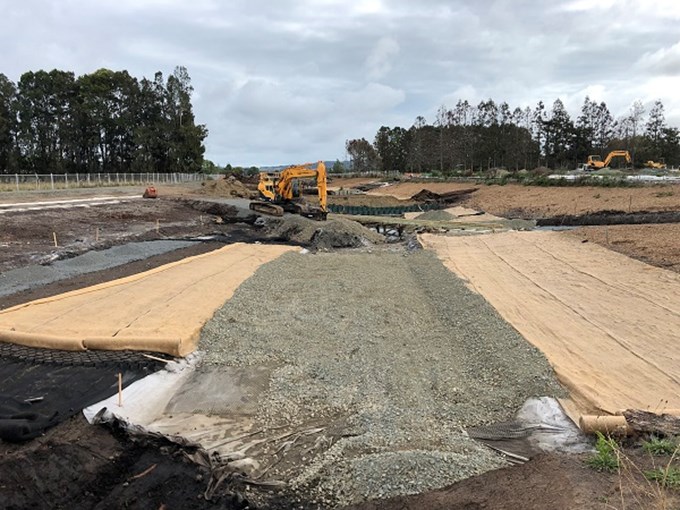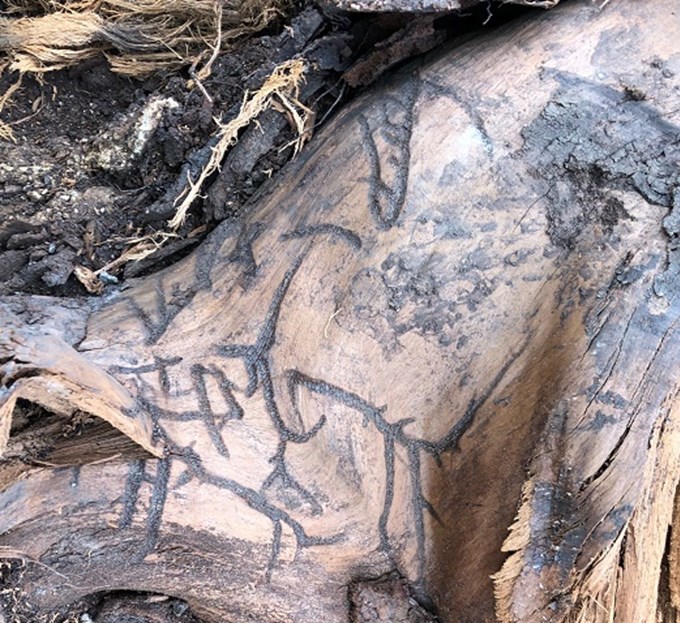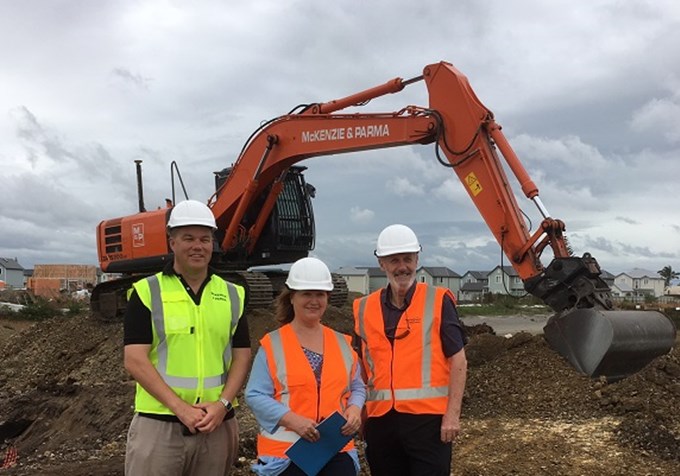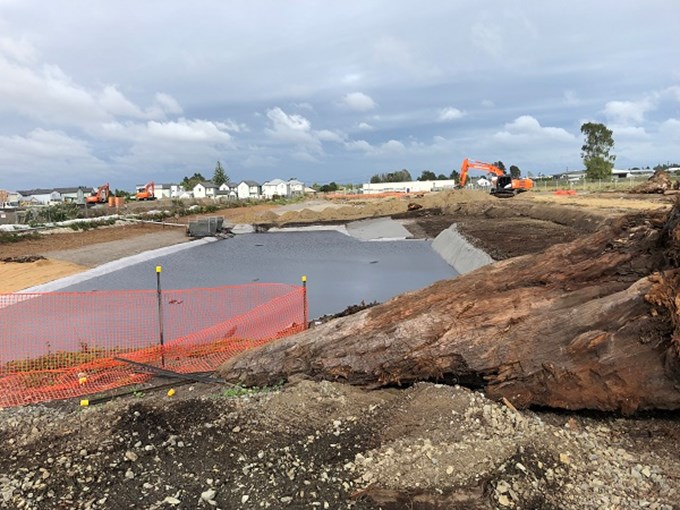Behind the fence in Papakura’s Cosgrave Road is a hole any digger driver would be proud of.
The 2.3 kilometres of stormwater wetland taking shape in the area will make the development of thousands of homes possible.
About 80 per cent of the earthworks needed on the Awakeri Wetlands Project have been completed, and the work is running ahead of schedule thanks to hard work and summer weather.
More than 65,000 cubic metres of soil has been dug to create the T-shaped channels linking Grove, Walters and Cosgrave roads.
Auckland Council is investing about $100 million in the Takanini area transforming rural land into an eco-friendly wetland while at the same time resolving flooding and stormwater issues in the notoriously peat-soiled area.
Already completed as part of the Takanini Stormwater Upgrade Plan is the 1.1km-long Artillery Drive tunnel linking the McLennan Wetland with the Pahurehure Inlet at Katavic Park via the Grove Road culvert.
The trench that surrounds the entire development, up to seven metres deep, has long since been filled. It contains a wall that stops groundwater entering, which would compromise the wetland’s ability to deal with stormwater.

Manurewa-Papakura Ward councillor Daniel Newman has learned a lot about engineering following the development.
“This project is a unique approach to resolving flooding and stormwater problems in Takanini, and that’s been a long-term priority for me.
“To be able to manage stormwater challenges in the area while creating a natural habitat through pathways, open spaces and planting is quite something. It’s an innovative opportunity.”
Cr Newman and Manurewa and Papakura local board chairs Angela Dalton and Brent Catchpole visited the site recently to see the waterways, green spaces, paths and cycleways taking shape.
“It is a remarkable feat,” Ms Dalton says. “We’re going to see a lot of people coming to the Manurewa-Papakura area, and Awakeri will be a wonderful amenity for them.
“Once we would have just dug vast trenches and piped everything away, but this approach creates something valuable for generations to come.”
There is still plenty to be done, but contractors are working flat-out installing kilometres of wetland channels, weirs and fish passages, stormwater outlets, about 3.5km of pathways, seven boardwalks and creating the space needed for hundreds of thousands of native plants to take root.

The site is dotted with foundations for bridges crossing the channels and huge kauri stumps, thought to be thousands of years old, are dotted around.
Contractors combined a 50-tonne and 30-tonne digger to move one of the larger stumps, only to be thwarted. The stump is still there, the work rerouted around it.
Mana whenua are working with contractors to recover logs for carving, but it’s hoped many will be left in place as wetland habitat for eels, fish and lizards.
There will eventually be 20 stormwater connections servicing future housing developments and project manager Tony Morley says most of the connection structures are in place and being allowed to settle.
“I’ll never complain about having to dig a hole in my garden again,” Mr Catchpole says.
“It’s amazing how much of it is just like what you’d do at home though, with the material in the bottom of the trenches all held in place in the same way you’d lay a garden path, albeit on a much bigger scale.
“Going behind the fence to see what’s going on brings home how skilful the work is, and the sheer scale of the work needed before we can even begin to see new homes rising.”
The completion of the first stage of the project is more than a year off, and two further stages follow, with work ongoing until 2023.



